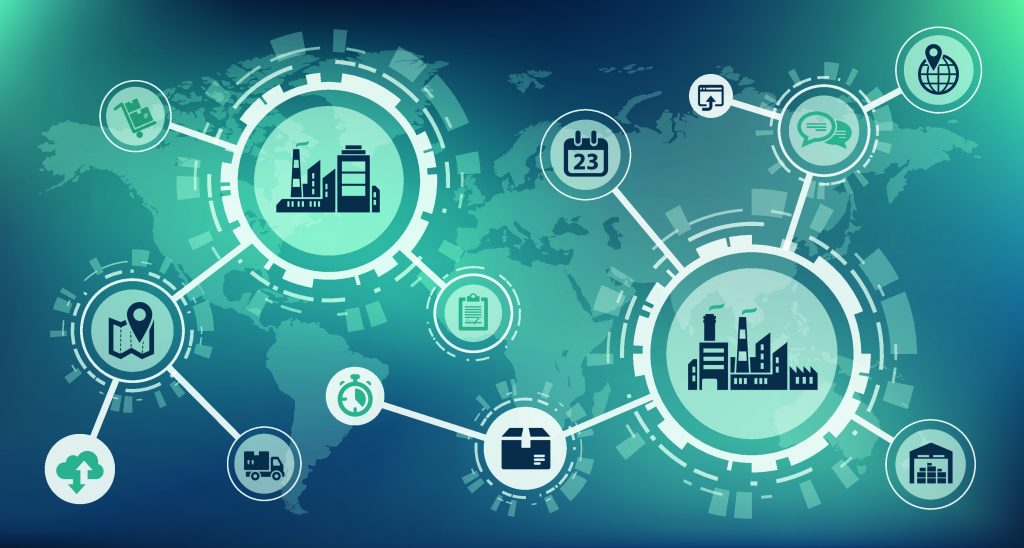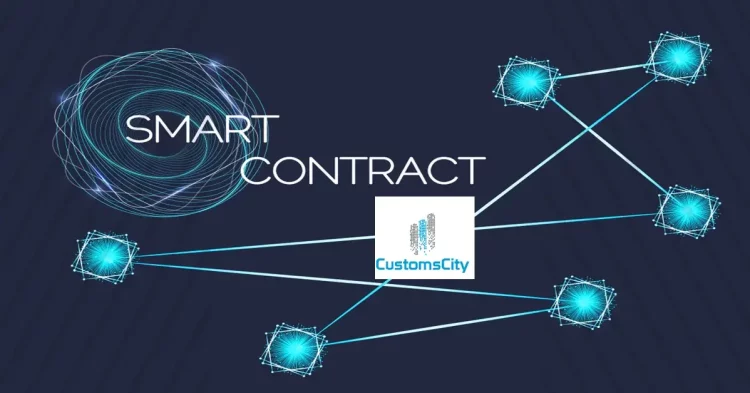Introduction
Supply chain management (SCM) plays a crucial role in the global economy, facilitating the movement of goods from manufacturers to consumers. However, traditional supply chains often face significant challenges such as lack of transparency, delays, fraud, inefficiency, and difficulty in tracking products across the supply chain. These issues not only increase costs but also affect trust between parties involved in the supply chain, including suppliers, manufacturers, distributors, retailers, and consumers.
Blockchain technology—with its inherent features of decentralization, immutability, transparency, and security—has the potential to revolutionize supply chain management by offering solutions to many of these problems. By providing a transparent, tamper-proof ledger that can track every step of a product’s journey, blockchain technology enables real-time tracking and ensures data integrity, which ultimately builds trust among stakeholders and creates a more efficient, secure supply chain.
In this article, we will explore how blockchain provides transparency and real-time tracking capabilities in supply chain management, transforming how goods are tracked, verified, and managed from origin to delivery.
Section 1: Key Challenges in Traditional Supply Chain Management
1.1 Lack of Transparency and Visibility
Traditional supply chains often suffer from opacity, as many actors in the chain may operate independently with limited visibility into the entire flow of goods. This can lead to information silos where data is stored in separate, proprietary systems, making it difficult for partners to access or verify real-time information about products.
For example, a manufacturer may not know the precise origin of the raw materials it receives, or a consumer may have no idea how ethically or sustainably a product was sourced. This lack of transparency can result in inefficiencies, increased costs, and even reputational risks when supply chain practices are scrutinized.
1.2 Counterfeit Products and Fraud
Counterfeit goods represent a significant problem across many industries, particularly in sectors like pharmaceuticals, luxury goods, and electronics. Fraudulent actors may introduce fake or substandard products into the supply chain, which compromises product quality, safety, and consumer trust.
In industries like pharma, counterfeit medicines can lead to devastating consequences for public health, while in luxury goods, counterfeit products can damage brand integrity and consumer loyalty. Traditional supply chains often lack the tools to trace the authenticity of goods throughout the journey, making it difficult to verify whether a product is genuine or counterfeit.
1.3 Complex and Fragmented Processes
Supply chains typically involve a wide range of stakeholders, including manufacturers, suppliers, logistics companies, customs authorities, and retailers, all of which may operate in different regions and use different systems to track and manage goods. This creates significant coordination challenges. Different systems may not communicate well with each other, leading to delays and miscommunication, which can increase lead times and result in higher operational costs.
For instance, a shipment could be delayed due to miscommunication between a supplier in one country and a customs office in another. Traditional methods of tracking goods (e.g., paperwork, emails, phone calls) can lead to confusion, inefficiency, and potential errors.
1.4 Inefficiencies in Data Handling
Traditional supply chains rely heavily on paper-based documentation or manual record-keeping, which can be prone to errors, fraud, and data loss. Reconciliation of data from different sources is time-consuming, and discrepancies between records can lead to delays and disputes between stakeholders.
Furthermore, the complexity of manually updating records across multiple parties can cause information to become outdated, leading to decision-making delays and poor visibility into the status of goods as they move through the supply chain.
Section 2: How Blockchain Solves These Challenges
Blockchain technology addresses many of the challenges faced by traditional supply chains. Here’s how blockchain’s features enhance transparency and real-time tracking in supply chain management:
2.1 Immutable and Transparent Ledger
Blockchain is essentially a decentralized, immutable ledger where each transaction (or “block”) is permanently recorded and cannot be changed or tampered with. Each block is linked to the previous one, forming a “chain” of data that is cryptographically secured. Once a block is added to the blockchain, it becomes immutable, meaning it cannot be altered or deleted.
This creates complete transparency in the supply chain, as all transactions are recorded in a publicly accessible ledger (in permissioned blockchains, access is restricted to authorized parties). Stakeholders in the supply chain—such as manufacturers, suppliers, distributors, and consumers—can access the same information, ensuring that everyone has a clear and accurate view of the product’s journey from origin to delivery.
For instance, Walmart and IBM have partnered to implement a blockchain-based supply chain solution for food traceability. Using the Food Trust Network, Walmart can track the movement of food items through the supply chain, from farm to shelf, ensuring that products are safe, fresh, and ethically sourced.
2.2 Real-Time Tracking and Visibility
Blockchain provides real-time tracking of products across the supply chain by recording each transaction and movement of goods on the distributed ledger. Every time a product changes hands—whether it is manufactured, shipped, or stored—this information is updated on the blockchain. As a result, all parties involved in the supply chain can see the product’s current status and history in real-time.
This level of visibility helps companies make more informed decisions, minimize delays, and prevent supply chain disruptions. For example, a logistics provider can instantly see if a shipment has been delayed due to weather or customs issues, allowing them to take corrective action before it impacts the final delivery.
Moreover, IoT (Internet of Things) devices can be integrated with blockchain to enable real-time tracking of physical goods. For instance, RFID tags or GPS sensors attached to products or shipments can automatically update the blockchain with location data, temperature, humidity, or other relevant parameters. This makes it easier to monitor and control the conditions under which goods are transported or stored.
2.3 Authentication and Counterfeit Prevention
Blockchain’s immutable nature and ability to track every step in the journey of goods make it a powerful tool in combating counterfeit products. By recording each transaction on a transparent ledger, blockchain creates a digital fingerprint of a product that proves its authenticity.
For example, a luxury brand could use blockchain to authenticate its products by linking each item to a unique digital certificate stored on the blockchain. Consumers could scan a QR code on the product to verify its origin, ensuring that it is genuine and not a counterfeit.
In the pharmaceutical industry, blockchain can prevent the entry of counterfeit drugs into the supply chain. Each batch of medicine can be tracked from production to distribution, ensuring that only genuine products reach consumers.
2.4 Streamlined Processes and Reduced Fraud
With blockchain, all supply chain participants can access the same real-time data without relying on intermediaries or paper-based records. This reduces the complexity of managing and reconciling multiple records, thus speeding up processes and improving efficiency. Furthermore, blockchain reduces the potential for fraud because once a transaction is recorded on the blockchain, it cannot be altered or falsified.
For example, De Beers, a leading diamond company, uses blockchain to track the entire lifecycle of diamonds, from mine to market. By using blockchain to ensure the authenticity of diamonds, the company helps prevent the sale of conflict diamonds and improves consumer confidence in the supply chain.
2.5 Smart Contracts for Automation
Blockchain enables the use of smart contracts, which are self-executing contracts with the terms of the agreement written into code. Smart contracts automatically trigger actions (e.g., payment, shipment, release of goods) when predefined conditions are met.
In a supply chain, smart contracts can automate processes such as payment release, inventory management, and shipment tracking. For example, a smart contract might automatically release payment to a supplier once the goods are delivered and verified on the blockchain, reducing administrative overhead and improving efficiency.

Section 3: Real-World Applications of Blockchain in Supply Chain Management
3.1 IBM Food Trust
The IBM Food Trust Network is one of the most well-known blockchain-based solutions for improving transparency and traceability in the food supply chain. By using blockchain to track the movement of food products, from farm to store, the network ensures that all stakeholders—such as farmers, suppliers, distributors, and retailers—can access accurate and up-to-date information about food products.
This level of transparency helps to improve food safety, reduce waste, and enhance sustainability by allowing consumers to track the origins and environmental impact of the food they purchase.
3.2 VeChain in Automotive and Luxury Goods
VeChain is a blockchain platform that is used in various industries, including automotive and luxury goods, to track the authenticity and provenance of products. In the automotive industry, VeChain allows manufacturers and consumers to track the lifecycle of a vehicle, from production to maintenance, ensuring that all service records are accurate and verifiable.
In luxury goods, VeChain helps combat the issue of counterfeit products by enabling brands to provide consumers with a blockchain-based certificate of authenticity that proves the legitimacy of the product.
3.3 Maersk and TradeLens in Shipping and Logistics
Maersk, the world’s largest container shipping company, has partnered with IBM to create TradeLens, a blockchain-based platform that tracks the movement of goods in real time. The platform connects all stakeholders in the shipping and logistics ecosystem—shipping lines, port authorities, customs officials, and truckers—ensuring that all parties have access to the same real-time data.
TradeLens helps reduce paperwork, speed up customs clearance, and improve efficiency, while also providing greater visibility into the status of goods, reducing delays and costs in the supply chain.
Conclusion
Blockchain technology is transforming supply chain management by providing transparency, real-time tracking, and security. By enabling the decentralized and immutable recording of transactions, blockchain ensures that all parties in the supply chain have access to a single source of truth, which helps to eliminate inefficiencies, reduce fraud, and improve coordination.
From luxury goods and automotive to food safety and pharmaceuticals, blockchain is already being used by leading companies to enhance the transparency and traceability of their supply chains. As the technology continues to evolve, its potential to revolutionize supply chain management will only grow, creating more efficient, secure, and sustainable supply chains worldwide.
















































